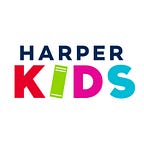The Thing About Corn
by Christine Day
The Thing About Corn: Children’s author and Upper Skagit citizen Christine Day tackles teaching kids true Native American history.
I’m a biracial Native woman. Most of my ancestors came from seafaring societies: from a tiny Norwegian village on the Trondheim Fjord, to the city of Belfast, Ireland (famed birthplace of the RMS Titanic), to the Coast Salish people whose territories have always been my home. I’m an enrolled citizen of the Upper Skagit, a small tribal nation in northwestern Washington State. And perhaps due to these roots in my family tree, I have always been fascinated by waterways. The way bodies of water that connect continents and cultures. How rivers move through landmasses like arteries.
I tend to write and reflect on water a lot. This fascination is especially prevalent in my first book, I Can Make This Promise. And as I sat down to write this blog post, I fully expected to write about coastlines again, because I always seem to be writing about tides, sea cliffs, and the sun sinking beyond the western horizon, in one way or another.
But instead, I find myself looking inland. I find myself thinking about corn.
In An Indigenous Peoples’ History of the United States, Roxanne Dunbar-Ortiz spends an entire chapter talking about corn. She discusses its agricultural roots in central Mexico, over ten thousand years ago. She describes the vast networks of trade and commerce and migration that brought corn seeds to the north. She describes the sophisticated irrigation systems that enabled it to grow. She illustrates ancient cities and interconnected civilizations, filled with established farmers and ecologists and engineers, artists and nobility and surgeons.
Growing up, I knew none of this. Despite being raised and educated here, in North America. Despite being a person of this continent.
The only education I ever received about corn came from the falsely feel-good story of the First Thanksgiving. I learned about how the Natives shared this food with the Pilgrims. How their gifts helped these newcomers survive in the “New World.” (I’ve utilized quotations here, since North America is equally as old and lived-in as Europe. In fact, when Columbus first arrived here, it is estimated that about 100 million people were already settled throughout the Americas.)
And what did this Thanksgiving lesson do for me, as a child? Not much, if I’m being honest. It reinforced the importance of kindness and generosity, certainly. But it also contributed to a narrow-minded perspective of American history. It fed into stereotypes that imagined Native people as benevolent but primitive, ultimately incompatible with progressive civilization. (Which is ironic and pathetically redundant, since Native people have always been cosmopolitan.)
In what is currently known as Nebraska, members of the Ponca Nation and their allies gather every year to plant corn seeds in the proposed path of the Keystone XL pipeline. These are regarded as sacred seeds of resistance. This is a tradition and coalition that began in the 2010s. It is one example of actions being taken in the Water is Life movement. It is one example of Natives continuing to honor their roots, to feed people, and to grow for future generations.
As an author of books for young people, who wishes to open discourses that go beyond today’s surface-level curriculum, I find my brain going in loops over stuff like this. Over the importance and significance of things as common as corn. Because I want my stories to feel real. I want to help my readers make these connections. I want to dig deep and plant seeds. Seeds of knowledge and curiosity and compassion. Seeds of resistance. Seeds of courage.
About the author:
Christine Day (Upper Skagit) holds a master’s degree from the University of Washington, where she created a thesis on Coast Salish weaving traditions. I Can Make This Promise is her first novel. Christine lives in the Pacific Northwest with her husband. You can visit her online at www.bychristineday.com
About the book:
In her debut middle grade novel — inspired by her own family’s history — Christine Day tells the story of a girl who uncovers her family’s secrets and finds her own Native American identity.
All her life, Edie has known that her mom was adopted by a white couple. So, no matter how curious she might be about her Native American heritage, Edie is sure her family doesn’t have any answers.
Until the day when she and her friends discover a box hidden in the attic — a box full of letters signed “Love, Edith,” and photos of a woman who looks just like her.
Suddenly, Edie has a flurry of new questions about this woman who shares her name. Could she belong to the Native family that Edie never knew about? But if her mom and dad have kept this secret from her all her life, how can she trust them to tell her the truth now?
